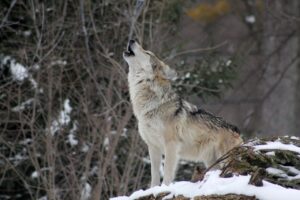This post was originally published on Sustainability Times
Source: Sustainability Times
Europe’s “wolf problem” is fast becoming a source of social and political tension. Relative conservation success across the continent has led to calls for action from worried politicians and farming and hunting groups. And the European Commission has now proposed a change in their international status, from “strictly protected” to “protected”, which could allow people to hunt wolves.
However, changing the protection status may not be the best solution, especially as only three of the nine wolf populations in the EU have reached favourable conservation status. Instead, perhaps the time is ripe for a renewed focus on learning to live – again – with wolves. Proven prevention strategies, such as fencing and the use of guard dogs, play a critical role in this.
But the question may be fundamentally philosophical. Namely, it boils down to how to coexist – and the cultivation of ethical principles and values which undergird a successful coexistence.
‘Deep ecology’ and the equal right to exist
In this task, the work of Norwegian environmental philosopher Arne Næss (1912-2009) might be of help. Næss is known as the father of “deep ecology”, an ethical theory that contends that all life has intrinsic value. Næss argued that all beings, whether human or nonhuman, have an equal right to exist and flourish, a principle he called “biospherical egalitarianism”.
As this applies to wolves, Næss was clear: wolves have just as much a right to be here as we do.
Næss wrote an essay with biologist Ivar Mysterud stating: “The well-being of the species wolf as part of human and nonhuman life on Earth has value in itself!” As a result, they argued, “humans have no right to reduce this richness and diversity, including wolf habitats and races, except to satisfy vital needs!”
Despite this ostensibly radical challenge to human-centred ethical norms, Næss demonstrated a pragmatic approach in how the principle of biospherical egalitarianism was applied in practice. For example, he considered the important contextual factors of local wolf-human interactions, writing:
For some sheep holders, the need to protect their sheep from wolves or to be in some way compensated is today vital. It means protecting the basis of their economy and home where they have lived for generations.
In addition to human interests, he also took seriously the moral obligation to reduce the suffering of sheep and other domestic animals. This is especially salient as humans have reduced the capacity of these species to evade wolves.
Mouflon, the wild ancestor of domestic sheep, do their best to avoid large predators by fleeing into mountains. In contrast, after thousands of years of selective breeding, modern livestock have fewer genetic defences and are left to fend for themselves in fenced-in fields.
Man has a heart, not just a brain
Næss avoided a one-size-fits-all answer to the question of wolves (a position other scholars criticised him for). But his focus on articulating general ethical principles to serve as a backdrop for contextual decisions may have importance in the increasingly heated and political nature of this rewilding debate.
For example, Næss used the term “mixed community” to denote places which comprise humans and those species who play a clear role in human affairs. Challenging the tendency to define community only in human terms, Næss contended that this framing helps to “break down some of the barriers commonly erected between humans and any other forms of life within our common space”.
In doing so, this can open pathways for increased identification and empathy for nonhuman others – a capacity Næss believed all humans have, stemming from an inherent continuity between human and nonhuman life.

Indeed, as the pioneering American conservationist Aldo Leopold similarly maintained, perceiving ourselves in a community with others is a prerequisite for moral action. In this case, it helps to make concrete the idea of a wolf’s right to exist – they are members of the community just like us.
Applying this ethical framework of “mixed communities” to current EU deliberations can have some benefits. For example, it may inspire the further development of creative, mutually beneficial solutions such as economic compensation for livestock losses – a move which Næss called for – as well as improving wolf-attack prevention.
It may also play an effective role in countering the often-baseless fear and hysteria around wolves (Næss blamed the brothers Grimm for the animals’ bad public image).
Perhaps most important of all, though, is the potential for connecting with our emotional elements. As Næss said: “Man has a heart, not only a brain.”
To move towards a sustainable coexistence, it is not enough to appeal to abstractions about scientific benefits or devise perfectly efficient compensation schemes. This must also derive from a sense of solidarity with other species – a full recognition that, in Næss’s words: “Humans are not alone on this planet.”
Interestingly, as a recent study showed, most people living in rural communities in the EU already believe that wolves have a right to exist, corresponding with Næss’s relative optimism about the possibility of mixed communities. This is all the more important to remember in light of the worrying political divisiveness in relation to Europe’s so-called wolf problem.
This article was written by , a lecturer in Philosophy at the University of Galway. It is republished from The Conversation under a Creative Commons license. Read the original article.
The post Europe has a wolf problem, but a Norwegian philosopher has the solution appeared first on Sustainability Times.





0 Comments